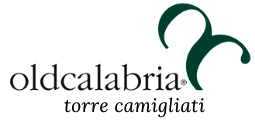
SIGHTSEEING
| Sightseeing
Our journey through the Old Calabria Literary Park is imbued with the spirit of Norman Douglas´ great book of the same name. We were overjoyed to find the same magnificent mountains and scenery, the same remote and high-perched villages, that so excited him (perhaps in part because certain features of the three Silas reminded him of the views and atmosphere in the Scottish Highlands.) Such was Douglas ´ enthusiasm that he returned to Calabria several times on his walking tours, accompanied by young lads, like the heroes and sages of ancient Greece .
With our love of footpaths and sudden scenic views, we have decided to visit the mountains of the Pollino massif and the three divisions of the Sila (the Sila Greca, the Sila Grande and the Sila Piccola). These jagged peaks are swathed in magnificent vegetation and watered by innumerable springs, torrents, lakes and fiumaras – an aquatic symphony whose notes range from silvery tones to a deep, thunderous roar.
| The Giants of Fallistro (5 KM)
– 327 1766233 – faisila@fondoambiente.it
– faicosenza@gmail.com
– Simona Lo Bianco 3428023512
– s.lobianco@fondoambiente.it



Wilderness Reserve of Giants of Fallistro grows on 5.44 ha at an average height of 1420 m.s.l.m .. It is characterized by a vegetation in which the ultra-centennial larch pines are predominant on the poplar, beech and mountain maple.
From surveys conducted on woody samples and field observations, it is estimated that the origin of the pine forest dates back to the years 1620-1650, when the landowner, building summer dwellings and a spinning mill, was concerned about beautifying the place.
In the heart of the Reserve is L’Antica Filanda, cheered by tasty tastings and grilled barbecues with an excellent wine list.
Associazione Antica Filanda C/da Fallistro Località Croce di Magara 87056 Spezzano della Sila (CS) Tel.: 338/1733227 associazioneanticafilanda@legalmail.
| Parco Nazionale della Sila, Museo del Cupone (4 km)
Ing. Gencarelli 0984/57.97.57



- The Visit Center located in the town of Cupone, which was built following the adaptation of the spaces around the old state-owned sawmill and pless accessories, is today an environmental education center with nature trails, fauna observers, museum, geological garden. In addition to the adjoining picnic area along Lake Cecita, the “Cupone” Visit Center is one of the most popular areas of the Sila National Park. The Carabinieri Territorial Coordination of the Environment provides free guided tour service to organized schools and groups that make it a pre-requisite.
- Il Museo della Biodiversità del parco Nazionale della Sila
“Comm. Dott. Salvatore Belcastro”,
Is an explosion of colors and sensations. The collection is the result of decades of scientific research, especially entomological, aiming to put together all the available and possible data, depending on the specialization of the researchers involved, about biodiversity in Italy, more generally in Central-southern regions and islands, but with particular regard to Calabria and, most importantly, to Sila.
| Parco nazionale della Sila, la Fossiata (15 km)
Fossiata, in the heart of the Calabrian National Park, near Camigliatello, is one of the largest and most ancient forests of the Silano plateau. The larch pine dominates with its majestic exotic specimens which reaches in many cases the 40 m. of height. At the edge of the wood, there are immense grassy meadows, that in the spring light up the bright colors of the flowers. Fossiata, known in the province of Cosenza for its great naturalistic value, is the stopover for numerous hiking trails, and is also equipped with numerous areas equipped with fountains, tables, car parks and bars.
| San Giovanni in Fiore, (30 KM) the Florence Abbey and the demoantropological museum 0984/97.00.59



Vivaceous and steep country, dominated by the memory of the prophetic coelicus (inhabitant of the heavens) Gioacchino da Fiore (XII century), who here founded his archicenobio, gaining immense fame and veneration. Visit the ancient but refurbished Badia Florense, which combines Cistercian monophases with 17th-century wooden choirs, and, next to the Abbey, the demo-anthropological museum of peasant civilization.
| Acerenthia Arcaeologycal Excavations (30 KM)



The ancient village of Cerenzia was definitively abandoned in 1860 following various events ranging from the siege by Count Ruggiero in 1090, who wanted to punish the Lord of Certainty for a disobedience, to the pestilence of 1528 that fell on the population decimating it, until it came to the 1783 earthquake that hit it hard. Today, however, there are numerous ruins of houses, churches and the castle of the ancient Acerenthia.
| Caccuri, the castle (35 km)



An imposing medieval castle, restored to the taste of the nineteenth century and uninterruptedly inhabited to this day. the beautiful Church of the Reformation, a true museum with its prodigious altars, carved and gilded, so typical of Calabrian sacred furniture.
| Santa Severina, the historic center and the museum (45 km)



In the area of the historic marquis of Crotone, the village, an ancient episcopal residence, appears as perched on a steep cliff and proud of its Byzantine and Norman origins: an ancient neighborhood is still named La Grecía. At the entrance of the town is the Byzantine church of Santa Filomena, in Armenian style; in the monumental and harmonious square, overlooking the Cathedral (XIII century) the old Baptistery, and finally the Castle, impressive by mole, and possibly wanted by Roberto the Guiscardo. Byzantine fragments are scattered around the town.
| Cosenza, the historic center (35 km)



Ancient metropolis of the Bruzi, Cosenza is today a vast and lively modern city. The ancient part is full of charm with beautiful palaces and churches. His Academy was illustrious, still alive today.Native town of the famous philosopher, Bernardino Telesio. Suggested visit of the Duomo, the monastic complex San Francesco d’Assisi and the fifteenth-century church of San Domenico.A visit should also be made to the Palazzo Arnone Museum, the Castle, built in the 10th century, and to the Casa delle Culture, an interesting experiment on contemporary cultures.
| Rossano, the historic center and the museum (70 km)



One of the most important Byzantine centers in Calabria. Visit the small Panaghia church of the 12th century, and the church of San Marco, X century, with traces of ieratic frescoes. In the Cathedral an interesting picture of a Madonna ‘miraculously created ‘ but the real Rossano’s jewel, guarded in the Diocesan Museum, is the Codex Purpureus Rossanenisis, a Gospel Evangeliario produced in Palestine, with splendid miniatures and with silver characters. The arrival at the church of Santa Maria del Pátire is across olive groves and vineyards, and with views over exciting panoramic views.
| Corigliano, the Ducal Castle(60 km)



Town in panoramic position and with a tormented feudal history. Rich of some eighteenth-century churches and a beautiful 15th-century castle, already of the Ruffo princes. Corigliano is a testament to Calabrian artistic and devotional civilization.
| Longobucco, antica tessitura (40 km)



The village appears at the bottom of steep grassy crags, with the beautiful sixteenth-century sanctuary of Santa Maria Assunta and a small civic museum. His celebrity, Longobucco, however, owes it to the perpetuation of an ancient tradition of hand weaving (the materials are linen, hemp, silk and even the precious broom.
| Morano, the historic center



In the village you can visit the fifteenth-century and rare church of San Bernardino, with the cloister, the magnificent and Baroque Collegiate of Maddalena, the imposing Norman-Norman fortress, and next to it the church of Saints Peter and Paul, where four statues by Pietro Bernini, father of Gian Lorenzo. Worth a visit to the Museum of Agriculture and Pastoralism and the “Nibbio” Center for Naturalistic Studies of Pollino.
| Altomonte, the historic center



Overlooking the “Spoleto of Calabria”, this beautiful and untouched town offers first and foremost the pleasure of strolling in its streets, enjoying panoramic views and infinite architectural details. Visit the Castle, with medieval testimonies, the Museum of Sacred Art, which is home to the Convent of the Dominicans, where the genius Tommaso Campanella studied (1568-1639), and the church of Santa Maria della Consolazione.
| Maneggio Sila



| Ferrovie della Calabria/Sila’s Historic Train



station in town, for information on steam train trips.
0984. 578.120 / +39 328 23 91 117 /+39 328 23 91 123
Sito web: http://www.trenodellasila.it/






